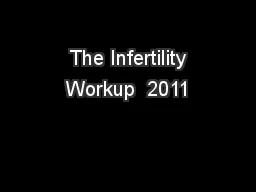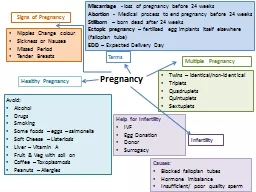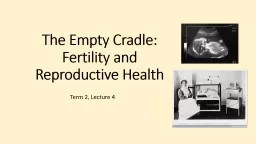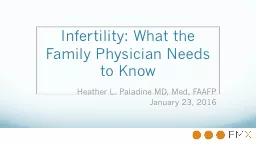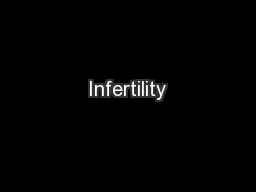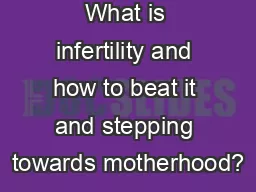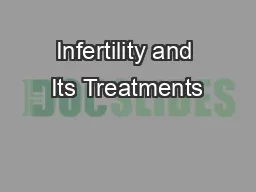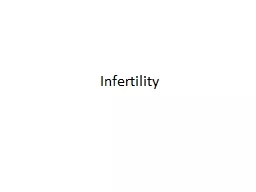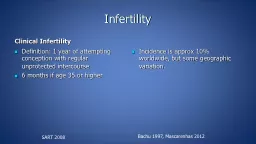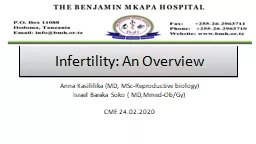PPT-The Infertility Workup 2011
Author : conchita-marotz | Published Date : 2020-04-10
Kevin Mark Johnson MD Board certified ABOG Board certified REI Review basic infertility textbook workup compare and contrast to current ASRM guidelines Spotlight
Presentation Embed Code
Download Presentation
Download Presentation The PPT/PDF document " The Infertility Workup 2011" is the property of its rightful owner. Permission is granted to download and print the materials on this website for personal, non-commercial use only, and to display it on your personal computer provided you do not modify the materials and that you retain all copyright notices contained in the materials. By downloading content from our website, you accept the terms of this agreement.
The Infertility Workup 2011: Transcript
Download Rules Of Document
" The Infertility Workup 2011"The content belongs to its owner. You may download and print it for personal use, without modification, and keep all copyright notices. By downloading, you agree to these terms.
Related Documents

